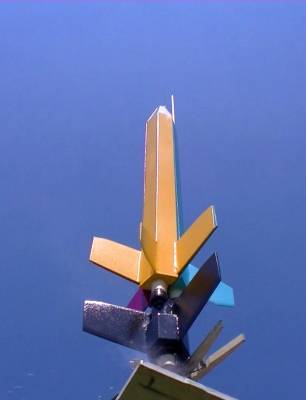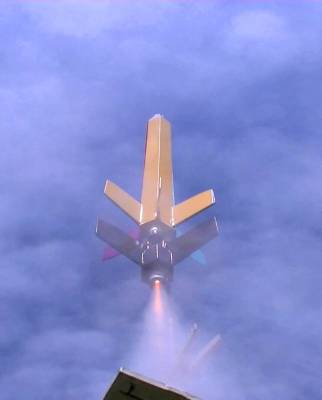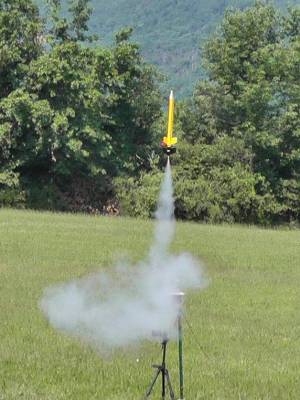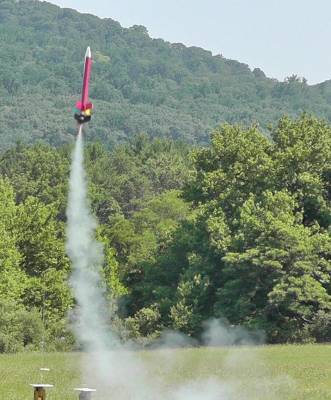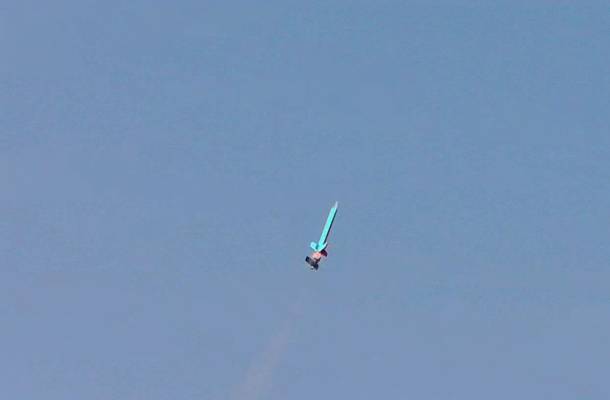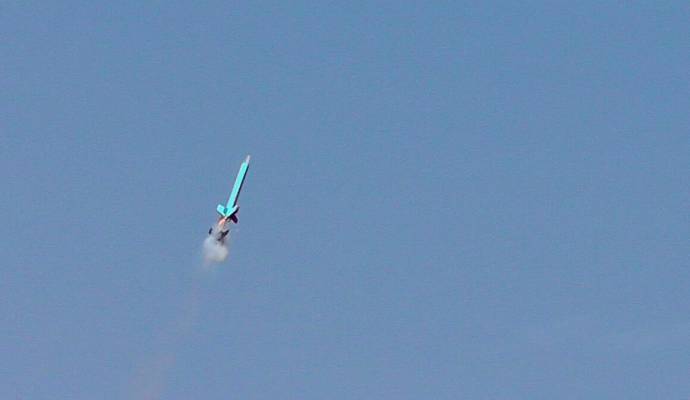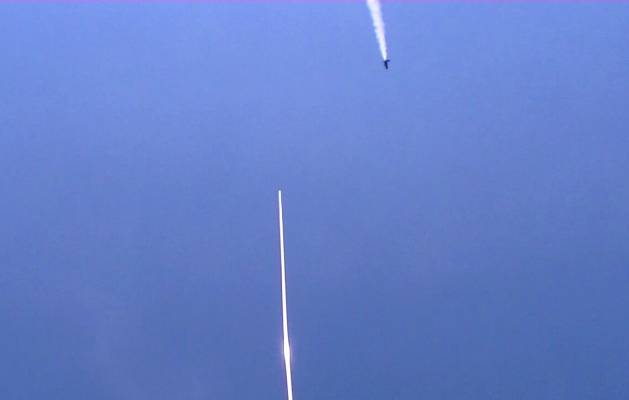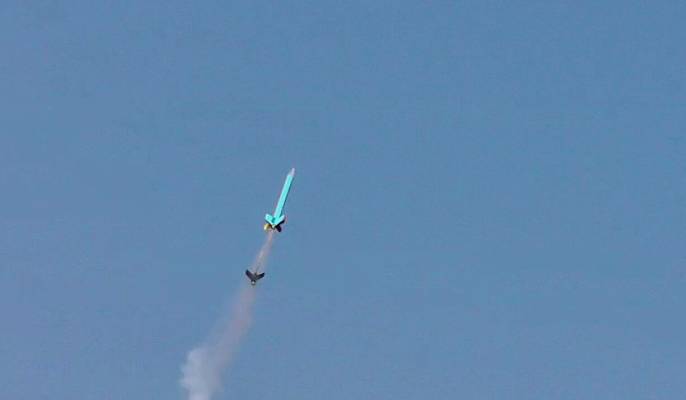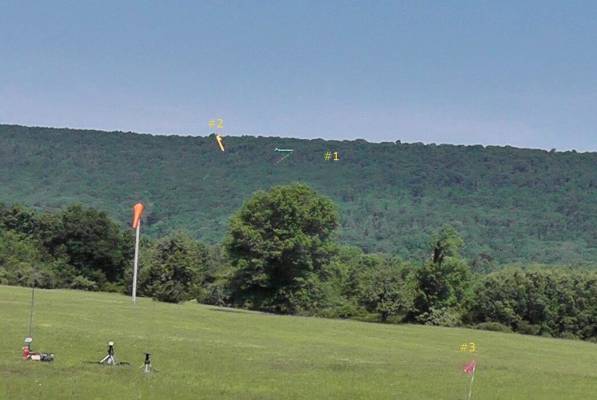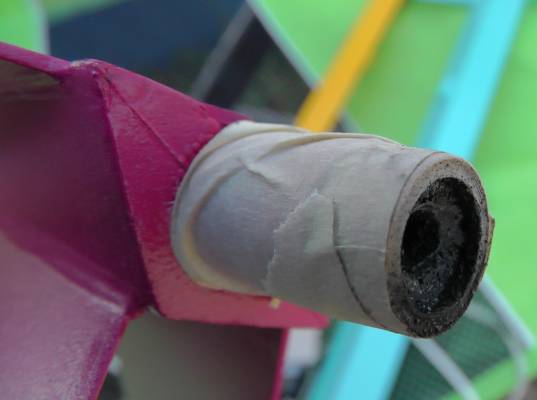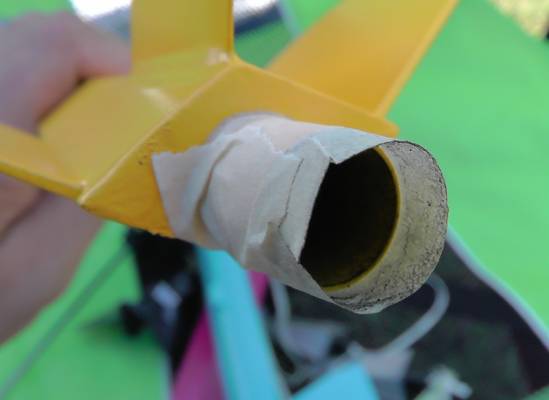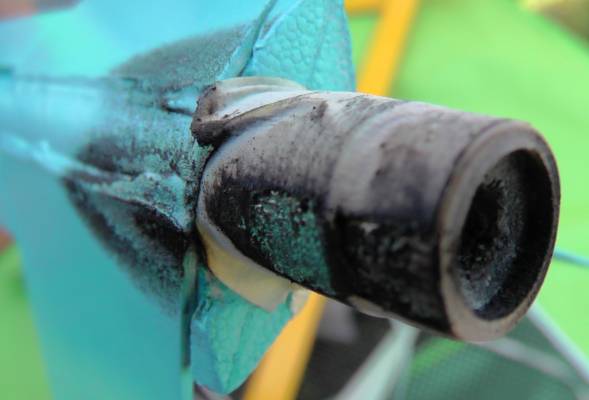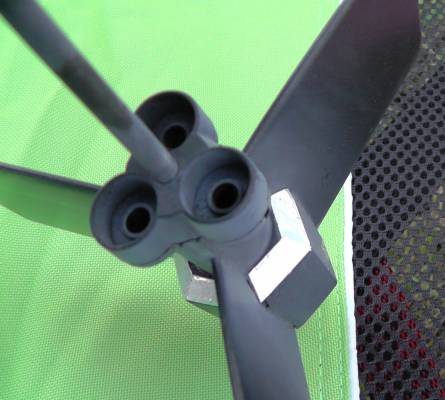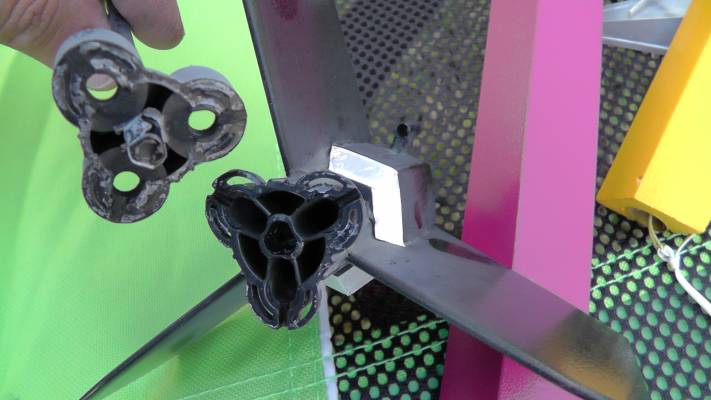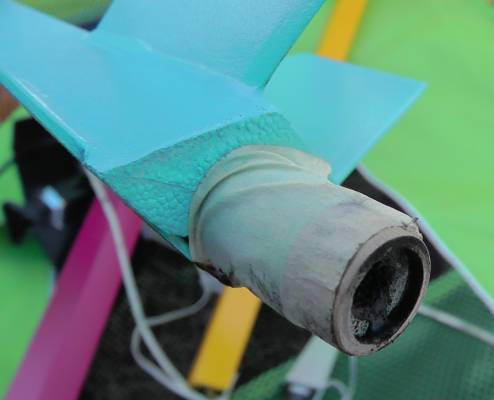This is Estes new multi-stage rocket with three simultaneously firing upper stages. The booster returns with tumble recovery, the three nearly identical upper stages return with tumble recovery also, after popping off the nose cones. The three upper stages are shaped to form a hexagon when combined on the booster stages. Each upper stage has three fins. The booster uses a B6-0 or C6-0, while the upper stages use the A10-3T mini-motors.
| Flight Date: | 2012-06-30 |
| Rocket Name: | MIRV |
| Kit Name: | Estes - MIRV {Kit} (2134) |
| Flyer's Name: | Rich DeAngelis |
| Motors: | B6-0/3xA10-3 |
| Expected Altitude: | 300 Feet |
| Wind Speed: | 6.00 mph |
| Launch Site: | Fort Indiantown Gap, PA |
This was the first ever flight of this new and very different rocket. I wasn’t too worried of the breezes, since the B6 is a strong booster even for a rocket that is 124 grams, and the A10’s on a 33 gram rocket would do well. It did take quite a bit of time to prepare four motors and three shock cords, each had to be stuffed into the tiny BT-5 tubes. The boost phase was as good as can be expected and all stayed together. Almost too fast to be seen, the three next stages left the booster behind and sailed pretty far up almost out of sight. I only heard and saw two of the three upper stages ignite and thought the other one didn’t light or got stuck, but sure enough all three stages were flying high. So it turns out Estes got that right.
The boost was fairly straight and the second stages all continued up and didn’t wander far from each other either as they flew in a tight cluster. All three successfully popped their nose cones, and they all seemed to come down together in a tight group, one after the other. The tumble/drag recovery worked fine and all three independent rockets landed within 20 or 30 feet of each other. Luckly, the soft-ish foam bodies did not suffer any recoil dings.
There was no altimeter on board so no detailed data could be obtained. Staging appeared to be at about 150 feet, while the upper rockets may have reached about 3-400 feet. Post-flight inspection revealed some interesting anomalies though. First, the booster landed on the tent top of the launch control officer. It was in two pieces. The two plastic parts of the ejection ducting manifold had separated at the glue joint – so much for Estes strongly worded recommendation to not use too much glue here! It may have broken when it struck the canvas tent top and not in flight, since both parts were found together. It was all quite sooty.
As for the upper stages, #3 had ejected its engine casing, although the motor did eject the recovery device just fine before it went away by itself. The #1 (upper) stage appeared quite sooty in the back. It also had a burn-through to some of the masking tape which Estes recommends to be used to hold the motor in. The rocket's finish was burned a bit though. I might re-paint the inside tail ends with a high-temperature paint.
| Stage | Motor(s) |
|---|---|
| 1 | Estes B6-0 |
| 2 | 3 x Estes A10T-3 |
 |
 |
